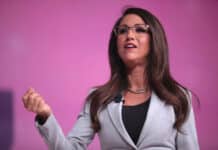The Washington Post confessed Wednesday that reopening schools in recent weeks has not spread coronavirus.
Public health experts found rates of COVID-19 infection at schools are far below what is found in surrounding communities. Evidences suggests that opening schools is not as risky as many, like teachers unions, proclaimed.
“Everyone had a fear there would be explosive outbreaks of transmission in the schools. We have to say that, to date, we have not seen those in the younger kids, and that is a really important observation,” said University of Minnesota infectious disease expert Michael Osterholm.
Tracking infections over a two-week period beginning Aug. 31, only 0.23 percent of students had a confirmed or suspected case of coronavirus. Among teachers, it was 0.49 percent. When one looks solely at confirmed cases, the rates are even lower: a paltry 0.078 percent for students and 0.15 percent for teachers.
Teachers want you to believe they’re headed into the Second Battle of Fallujah, when in reality it appears few indoor places are safer than classrooms.
“These numbers will be, for some people, reassuring and suggest that school openings may be less risky than they expected,” said Brown University Professor Emily Oster. She also confirmed school coronavirus rates are “much lower” than those in the surrounding community.
I quickly reached out to friends across the country to size up matters, particularly how the return, or lack thereof, has gone.
A colleague in Nebraska has a first grader and a high school sophomore. He says elementary and middle school students have been fully in class since the beginning of the school year, while high school students attend on an alternating schedule, slated to end in October with full attendance.
“My wife, who is a registered nurse, and I have been impressed with Lincoln Public Schools’ handling of the school environment this year,” he said. “Kids are in class, there hasn’t been any documented classroom transmission, and learning continues unabated.”
A friend in New York has twins in sixth grade.
“At our public middle and high schools, they are doing a hybrid model,” he explained. “85% of parents, all of whom were polled, however, indicated they want five days in school for all kids in this group and most of the remainder want hybrid. It’s working for the most part — meaning no cases and not many electronic issues — but my kids are dying for full-time. At our Catholic schools of all grades, they are in school full-time.”
A lifelong friend in suburban Seattle has a fifth grade son.
“The return to school has been as much of a disaster as I anticipated,” he said. “It starts off with a three-hour zoom meeting. Most 10-year-olds can’t sit through that or really learn from it. After the zoom meeting, he’s on his own to do the rest of his work on the computer. As a child with ADHD, he will not do it unless he’s watched constantly and even then he fights with us. As a first responder, I can’t take time off to be a teacher, so the days I have him, he’s with my girlfriend, who has to juggle working from home, as well as managing her own son’s on-line learning.”
Finally, a family member in Cleveland has three children, one that’s school age.
“He does remote learning every Wednesday and regular school the other four days,” he said. “You can also do 100% remote learning if you want. Most people didn’t choose that option.”
“I think it’s going pretty well. A few schools had to shut down for two weeks because staff members contracted the virus. But my son absolutely loves being back in school, and everything appears to be going smoothly,” he added.
With some exceptions, states and districts seem to adjust as needed. “Normal” may not be coming back soon, but as we enter autumn, schools and America as a whole received good news today; hopefully proper actions and adjustments follow.
A.J. Kaufman
A.J. Kaufman is an Alpha News columnist. His work has appeared in the Baltimore Sun, Florida Sun-Sentinel, Indianapolis Star, Israel National News, Orange County Register, St. Cloud Times, Star-Tribune, and across AIM Media Midwest and the Internet. Kaufman previously worked as a school teacher and military historian.

















